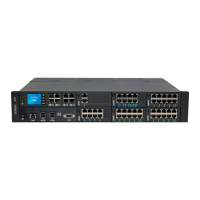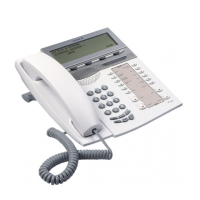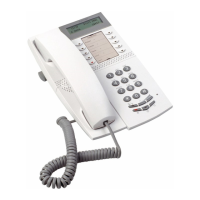Operation and Maintenance
264
Aastra 470 ab R3.0
syd-0337/1.5 – R3.0 – 05.2013
Configuring external signal destinations
If a system sends an event message, the event message opens a PPP communica-
tion channel via the public network from the communication server to a Terminal
Adapter, connected either directly to a PC or indirectly via a LAN/WAN (ISDN gate-
way). Once the event message has been confirmed, the system clears down the
PPP connection.
Two external signal destinations (Preferred event message destination and Alterna-
tive event message destination) can be configured.
The PPP via ISDN transmission protocol is used for the connection between the
communication server and the external signal destination.
The following parameters need to be selected or entered in the Fault & Mainte-
nance Manager for each of the two external signal destinations:
• Call number of the external signal destination (possibly as a route selection)
Possible external signal destinations include:
– Ordinary exchange output (route 3 is used)
– Route selection
– Cost centre selection (route 3)
After initialization, the call charges are allocated to cost centre 100.
• IP address of the PC if the communication server is to connect with the PC via an
ISDN gateway.
If the communication server is to connect with the PC without ISDN gateway,
the IP address entry should remain empty.
• TCP port number (default value is ‘1062’)
• User name and password of the dial-up networking of the PC or ISDN gateway,
to gain access via the TA or the ISDN gateway to the PC.
Other necessary configurations
The following parameters must also be configured.
• In the Fault & Maintenance Manager:
System ID of the communication server. This is important so that the communi-
cation server can be identified. The system ID must match the one in the AMS
Shell. In the system ID you can store a serial number or the DDI number for the
remote maintenance of the system (20 digits).
• In the Configuration Manager:
Route 3 must be allocated trunk groups with digital network interfaces (Routes
setting).

